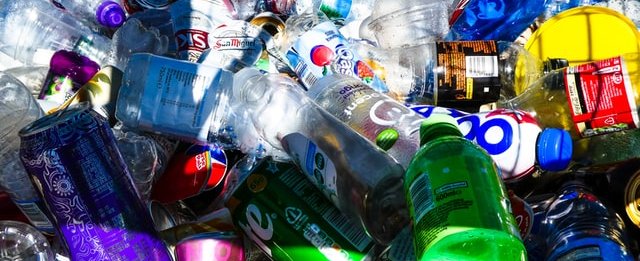
Author: Claire Rampen, Co-founder at Reath
UK-based startup Reath has been working with organisations to move away from single-use packaging and reduce waste. Here the team details their work to build an open data standard for reusable packaging, funded by UK Research and Innovation.
No-one needs to remind you that packaging waste is a problem; although other types of pollution may be ‘invisible’, we are faced with daily evidence of this broken system in the form of discarded – often single-use – packaging. The problem extends beyond the litter you see in the streets: you may do your best to deposit recycling into the correct bin, but due to contamination, and a lack of regulation around packaging materials, the chances of it having a second life are, unfortunately, small.
Despite all of our innovations in the packaging materials space (for example compostable packaging), and despite the increase in recycling rates over the last 20 years, packaging waste is still a huge problem.
There are compelling arguments for the introduction of more ‘circular’ systems (that is, reusing, or 'closing the loop' on recycling – ensuring waste is collected, recycled and used to make new products) rather than transitioning all single-use packaging to compostable.
If you think this sounds like an idealistic solution, bear in mind that countries such as Norway and the Netherlands have demonstrated that this behaviour can work: they achieve return rates of packaging as high as 96% through their incentivised recycling schemes.
However there are three challenges for companies looking to adopt reusable packaging:
- Packaging regulation is not built for circular systems
- Lack of data to inform the design of reusable packaging systems
- Challenge of integrating into existing business processes
Through our work setting up Reath, we had the opportunity to speak to companies who were trying to overcome these challenges. We realised that a fundamental piece of the puzzle was missing: a robust data infrastructure around reuse. So we set out to define and standardise the data points for reusable packaging.
Our approach
Reath conducted a research project, funded by UK Research and Innovation, to begin building the open data standard. Open standards for data are reusable agreements that make it easier for people and organisations to publish, access, share and use better quality data. The process we followed was based on the guidance offered by the Open Data Institute (ODI), and involved the following steps:
1: Mapping the data ecosystem
The term ‘data ecosystem’ describes the organisations who publish or receive data, within a certain domain, and the data infrastructure that allows the data to flow between them. In our case, this meant anyone who was involved in the production, use, sale and disposal of packaging. We used the ODI’s Data Ecosystem Mapping tool, and participated in the data ecosystem mapping webinar. This was a critical step in the process, as the exercise improved our understanding of the ecosystem, helped us to identify new stakeholders and surfaced datasets that already existed in this space.
2: Identifying stakeholders within the key domains
This led us to identify key categories of stakeholders who would be critical in defining the necessary data points needed for the core open data standard.
These broad stakeholder categories were as follows:
- Manufacturing brands: the brands that produce the consumer goods to be packaged.
- Retailers and supermarkets: the companies who have relationships with the individual consumer, and with the manufacturing brands.
- Environmental compliance bodies: the relevant national organisations in charge of implementing and upholding environmental safeguarding policies and ensuring that businesses comply with regulation.
- Health and safety bodies: the relevant national and local organisations in charge of implementing and upholding health and safety standards to protect the end consumer, and ensuring that businesses comply with regulations.
3: Conducting interviews with participants from representative organisations
We then created a key stakeholder map, identifying businesses within our target segments.
We conducted 25 interviews with representatives who held a variety of roles within the organisations to better understand the needs that each contributor had.
4: Synthesising the qualitative data
We then started working with the qualitative data we had collected, to extract learnings and insights. The purpose of this was to identify:
- the key challenges for individuals within organisations seeking to adopt reuse systems
- how these end-user needs can be met by an open data standard, and the tools that are built on top of an open data standard for example, a digital passport
- the key datasets to be included in the open data standard to meet those needs.
We used techniques such as creating user stories and identifying themes across all the respondents' answers. Our final piece of synthesis was to form statements of our key findings, and then provide evidence through quotes from our qualitative interviews.
5: Producing an alpha data standard for feedback and further iteration
We are in the final stages of the project and will be releasing an alpha data standard, along with a working paper, to capture the decisions made.
The process of building an open data standard from scratch was initially very daunting. However, we leant heavily on resources provided by the ODI, finding the interactive exercises and webinars particularly valuable. It has been an incredibly rewarding process; through our interviews, we have deepened our understanding of the domain we are working within, and have made some fantastic connections.
The project has left us feeling inspired by the dedication and focus of the individuals we interviewed, all determined to make reuse systems work.